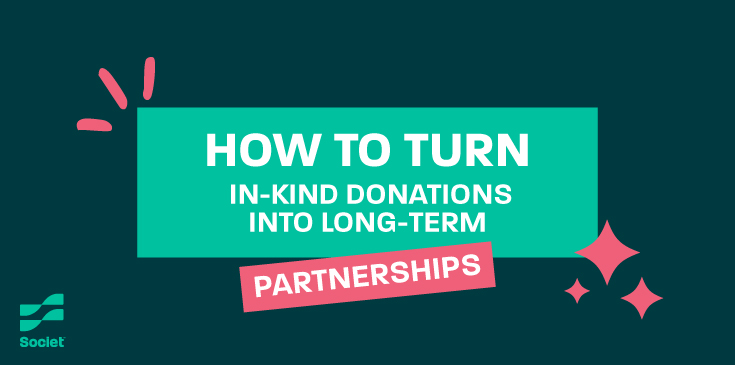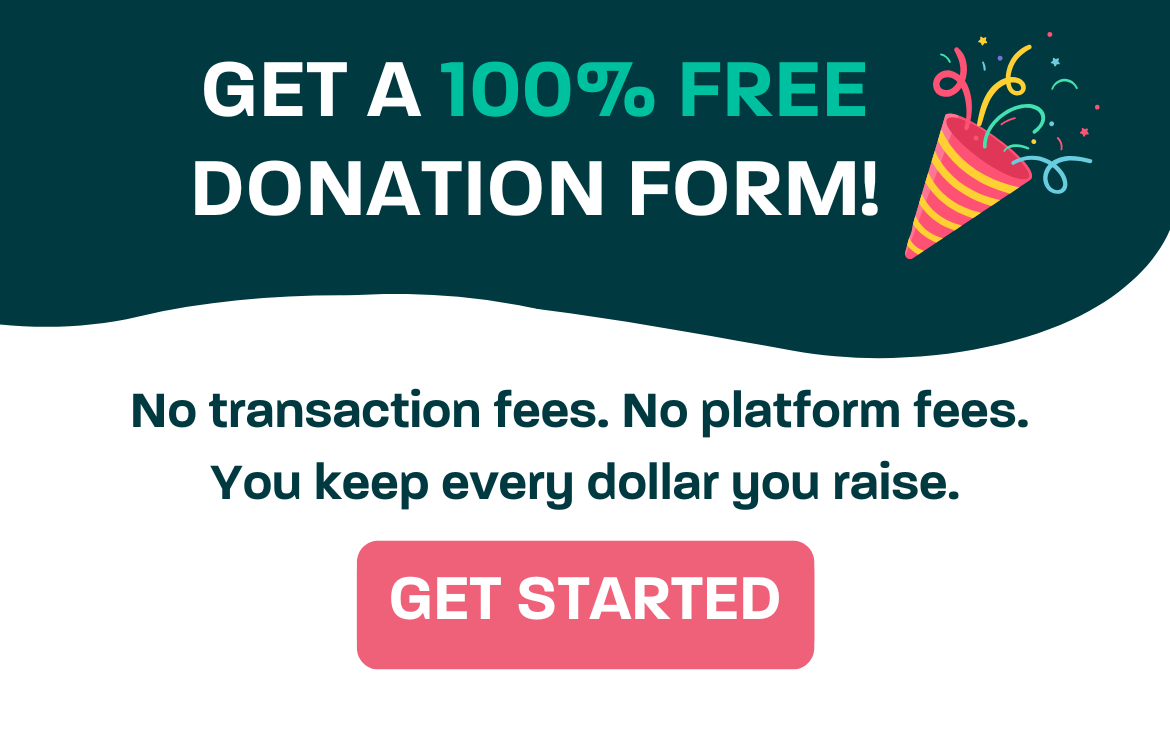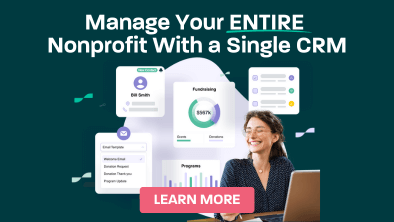
In-kind donations can be a powerful gateway to lasting, mutually beneficial partnerships. With the right approach, nonprofits can turn one-time gifts into ongoing alliances that support their missions long-term. This guide will explore steps your organization can take to deepen relationships with in-kind donors and build lasting partnerships with charitable companies.
1. Treat every donation like the start of a partnership.
- Gathering background on the company’s philanthropic interests. Look for alignment between your nonprofit’s mission and the donating company’s corporate values. Companies that typically donate to nonprofits may have established corporate social responsibility (CSR) programs or support certain causes. For example, a snack company may be interested in helping soup kitchens and food insecurity organizations.
- Assigning a point person for communications. To ensure consistency and create a personal connection with company stakeholders, designate a staff member to manage each corporate relationship. Have them reach out to the appropriate company point of contact to introduce themselves and open a line of communication.
- Logging the donation in your constituent relationship management platform (CRM) with notes on follow-up plans. In addition to tracking the contribution in your nonprofit accounting system, add it to each company’s profile in your CRM with details like donation type, company contact information, relevant touchpoints, and a plan for ongoing outreach.
If you treat in-kind donations with the same attention you would a major cash gift, even a small contribution can lead to something more. By establishing a system for tracking and nurturing these early interactions, you signal to companies that their gifts are the start of a long-lasting relationship, not a one-off exchange.
2. Recognize and report impact.
- Sending donation receipts. YPTC’s in-kind donation guide explains that nonprofits need to send in-kind donors acknowledgment letters for contributions worth $250 or more to ensure tax deductibility. These letters should include your nonprofit’s name and employer identification number (EIN), the date you received the contribution, a description of the contribution, and a statement that your nonprofit provided no goods or services in return for the contribution.
- Sharing key metrics. Provide impact statistics that let companies know exactly how their in-kind donations helped your beneficiaries. For example, you may say something like, “Thanks to your donation of 300 books, we were able to help 150 low-income students get the supplies they needed last semester.”
- Leveraging storytelling. In addition to quantitative impact information, give donors a deeper understanding of how their gifts touched community members via storytelling. Interview beneficiaries affected by the donor’s contribution, and include quotes that demonstrate how meaningful this support was to them.
Additionally, thank in-kind donors publicly to show off their support to a wider audience. This may include tagging them on social media, mentioning them in newsletters, or including them in event signage.
3. Stay in touch.
Consider stewarding in-kind contributors by:
- Celebrating milestones. Let’s say a law firm first contributed pro bono legal services to your organization a year ago. Recognize this giving anniversary by sending the company a handwritten note that demonstrates your gratitude, details how your partnership has grown, and summarizes everything you’ve achieved together.
- Sharing quick updates throughout the year. Send short emails or postcards with stories and photos showing how donors’ gifts are still making a difference. For instance, if a web design company donated its services, you may update the team on how your new website has helped more beneficiaries find your organization and receive the help they need.
- Inviting them to relevant events. Whether it’s a community partner breakfast, a facility open house, or a webinar, find opportunities for in-kind donors to reconnect with your mission in low-pressure settings. If possible, have your partnership point of contact attend the event so they can meet with company representatives face-to-face.
To take your in-kind giving partner relationships to the next level, go beyond straightforward communications. Could you feature them in a blog post or podcast? Could your team give them a behind-the-scenes tour of your operations to show how their contribution fits into your work? Personalized experiences show you’re invested in the relationship, not just the gift.
4. Invite deeper engagement.
- Volunteer days. If a company has donated supplies, suggest a day when their team can help distribute them or participate in a related program. Alternatively, you may have the company’s employees work directly with the beneficiaries that their contributions support.
- Advisory opportunities. Let’s say a marketing agency helped you promote your recent fundraising campaign. You may invite a company representative to meet with your team and help you develop long-lasting marketing strategies for your organization.
- Co-branded campaigns. Propose a small campaign in which your nonprofit’s logo and the company’s logo appear together, showing shared ownership of the initiative. For example, in honor of Mental Health Awareness Month, a mental health-focused nonprofit and telehealth app company may launch a co-branded social media campaign about the importance of getting help for mental health conditions.
The key to furthering relationships with in-kind donors lies in treating them as more than contributors; they are collaborators, community champions, and advocates waiting to be activated. With consistent communication, tailored engagement, and a clear path for deepening involvement, you can turn a single donation into a shared impact journey.


